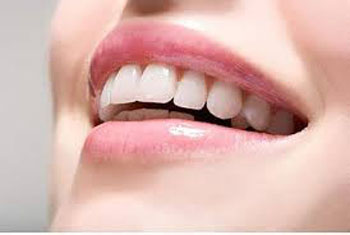
Contrary to what people think, the most resistant part of our bodies is not our large and strong bones, but the tiny teeth in our mouths. It is dental enamel that gives our teeth their resistance. Enamel is the hardest and most intensely mineralized substance in the body, and is one of the four main components of the teeth, alongside dentin, cementum and pulp. The enamel covers the tooth as the external protective layer. Since it contains no nerves, it is not sensitive.
This feature of enamel is certainly a great blessing from Allah because if the enamel were full of nerves, then biting and sucking and chewing would be very painful. As with the example of dental enamel, Allah has bestowed so many blessing on us that it is impossible to generalize. This is revealed in verses: “Is He Who creates like him who does not create? So will you not pay heed?
If you tried to number Allah’s blessings, you could never count them. Allah is Ever-Forgiving, Most Merciful.” (Qur’an, 16:17-18)
Scientists examining dental enamel discovered a highly detailed and unique structure. That structure makes the enamel, and therefore the tooth, hard. Although enamel looks smooth, it is not: It has tiny, shallow cracks. These cracks begin at the bottom of the enamel and spread toward the surface. They prevent the tooth from cracking by dispersing the pressure placed on the enamel and thus make it stronger and more resistant.
The sublime knowledge and detailed artistry in Allah’s creation of dental enamel also emerges in another way. Under normal conditions, these cracks in the dental enamel should grow every time we put pressure on our teeth. But they disappear thanks to a special healing process because while these cracks grow under pressure, organic substances fill them up and thus prevent the cracks from deepening and breaking the teeth. Our teeth should normally abrade away under the erosive effect of the foods we eat and this structural characteristic of the enamel. But thanks to Allah’s sublime creation, they are able to perform this difficult and lengthy task in the very best way.
In their research into tooth development, scientists uncovered a gene that provides instructions for dentin sialophosphoprotein (DSPP), which plays a major role in the formation of the softer dentin. This gene, which plays a crucial role in dental development, produces only one protein. However, this protein divides into two proteins with diametrically opposed functions, dentin sialoprotein (DSP) and dentin phosphoprotein (DPP). DPP creates pitted and chalky enamel leading to brittleness, while DSP increases the hardness of enamel and its rate of formation. To put it another way, as a result of the delicate collaboration between these two proteins that complement one another, and operate in just the right proportions, our teeth are neither too soft, nor so hard or brittle that they break.
The perfect equilibrium between DSP and DPP reveals the sensitivity in the critical dentin-enamel link because DSP, an active substance in the protection of teeth and present in a thin layer at the interface of enamel and dentin, is harder than all enamel. If the level of this protein is increased, the teeth become more brittle. In the same way that an excess of fluoride, which makes teeth hard and protects against decay, will weaken the teeth, so an excess of DSP has been shown to weaken the teeth and make them brittle.
On the other hand, DPP is known to have a weakening effect on teeth. Excessive levels of this protein will mean they decay and fall out. However, as the result of the omniscience of Allah, a very delicate balance has been established between DSP and DPP. This balance is so sensitive that DPP and DSP together lead to perfect tooth formation.
Allah reveals in a verse that He creates everything with a specific measure: “...Everything has its measure with Him.” (Qur’an, 13:8)
Dental enamel has a far superior structure to ceramics. The crystal structure of the salts in enamel, which contains large quantities of carbonate, magnesium, sodium and potassium ions, make the tooth more resistant to pressure.
Enamel consists of 97 percent mineral salts. Dental enamel is arranged in the form of hexagonal apatite crystals. Calcium salts that enter the structure of the enamel collect and crystallize, gradually dissolving into the organic tooth outline. This accumulation starts in the mother’s womb.
As the teeth come into being, millions of cells first store calcium and then combine with one another to form a large block.
The shape of the block is again determined by the cells that constitute it. At this point a miracle of creation takes place. For example, cells in the lower palate know the kind of structure that the cells in the upper palate, so far away from them, will produce. Both groups of cells produce giant blocks such that each will fit the other. In this way, when the jaw is closed a molar in the top of the jaw and one in the bottom fit together perfectly.
It is obviously Almighty Allah Who gives the cells that make up the teeth, and indeed all other cells, their properties.
One can see this flawless creation everywhere in our own bodies and at every point in the universe. The important thing is to reflect on these signs and to turn to Allah: “In the creation of the heavens and earth, and the alternation of the night and day, and the ships which sail the seas to people’s benefit, and the water which Allah sends down from the sky, by which He brings the earth to life when it was dead and scatters about in it creatures of every kind, and the varying direction of the winds, and the clouds subservient between heaven and earth, there are signs for people who use their intellect.” (Qur’an, 2:164)
Adnan Oktar's piece on Arab News:


